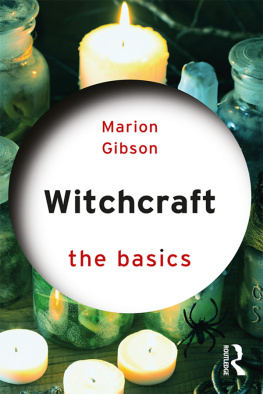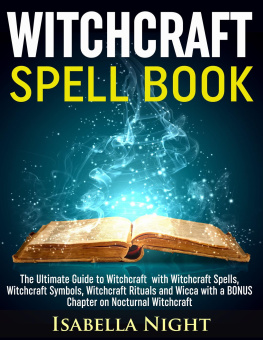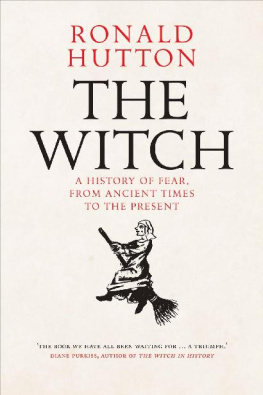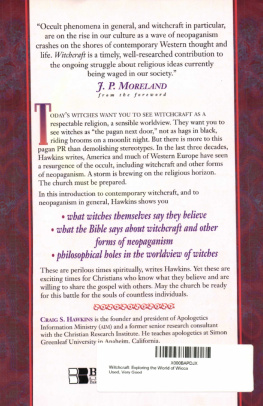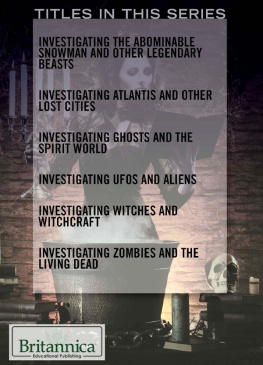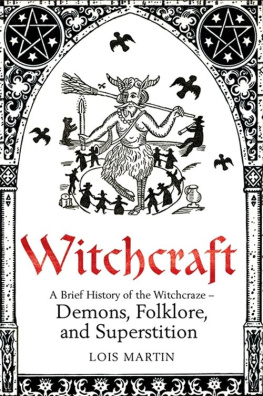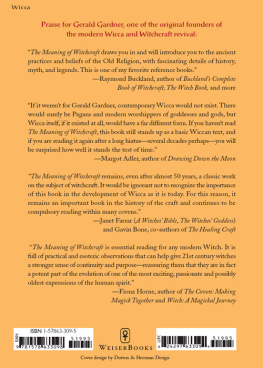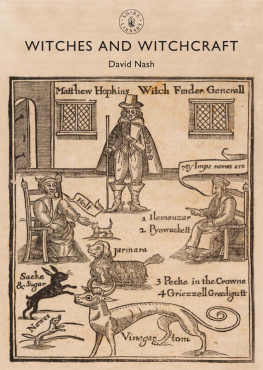Witches and Neighbours
Second Edition
For Bridget and Christopher Hill
Witches and Neighbours
The Social and Cultural Context of
European Witchcraft
Second Edition
Robin Briggs





Praise for the first edition of Witches and Neighbours:
`I read this book with mounting excitement. It is beautifully lucid and convincing, and I can only express my envy at the skilful way it is constructed and written ... It really is a splendid achievement and, particularly in its subtlety, ranks among the very best that has been written on the subject.'
DR STUART CLARK, author of Thinking with Demons: The Idea of Witchcraft in Early Modern Europe
`How extensive - indeed how normative - was witch-belief in early modern Europe? In answering this question, Briggs brings together a vast array of evidence, a masterly synthesis of current scholarly literature, supplemented by his own extensive research in the archives of the duchy of Lorraine. The result is a hook of extraordinary range and subtlety, the most lucid (and enjoyable) introduction to this complex subject yet to appear.'
JOHN ADAM SON, Sunday Telegraph
'An impressively wide-ranging synthesis of the huge amount of recent writing on witchcraft in early modern times, enriched by fascinating case studies drawn from Briggs' own detailed research in Lorraine. Briggs is wonderfully alive to the puzzles and complexities that surround the persecutions ... land] convincingly shatters some often cherished myths.'
PROFESSOR DAVID UNDERDOWN, author of Fire From Heaven
'in this difficult but rewarding book, Robin Briggs repeatedly reminds us of what is perhaps the most dumbfounding aspect of the ghastly witch-trials of the early modern period, the simple, now all-but-unassimilable fact that they were carried out in good faith ...Iwhatl provided the original impulse ... comes from a truth so disturbing that it is no wonder modern rationalist scholars flinch from it. In Europe in the i 6th and 17th centuries most people - legislators as well as peasants, members of the Royal Society as well as priests - really believed in witches.'
Luci HUc1-1Es-HALL ET, Sunday Times
`In his exploration of the mechanisms of projection that so often allow us to force on to someone else what we fear in ourselves, Briggs sympathetically interprets historical and more up-to-date witch-hunting.:
]LAN ETTE WI NTERSON, Dally Telegraph
'Fascinating... Briggs's] is a style of history, like genre painting, that is in itself, enormously attractive - you feel part of the scene he is describing, and can almost sense the dynamics of the mainly peasant community involved.'
DAVID ED EL STE N, Country Life
Contents
Maps
Major areas of witchcraft persecution in Western, Central and Northern Europe x
The heartland of persecution xi
Lorraine xiii

Map 1
This map and the more detailed one opposite are manifestly defective in several respects. The German situation was so complex that it has largely defeated me, while in the absence of any reliable data I have left Poland - known to be an area of significant persecution - as a blank. Anyone who has tried to make a map of this type will realize that the information does not readily lend itself to representation in this form.

Map 2
Key to Place-names




Map 3
Preface to the Second Edition
I'm naturally very pleased that Witches and Neighbours is reappearing under the Blackwell imprint, and would like to thank Tessa Harvey and Al Bertrand for their editorial help with this process. This is not a second edition in the sense of being a markedly different book from that first published in March 1996. The supplementary bibliography, which is the largest addition, shows that there has been an impressive amount of good research and writing on the history of witchcraft over the past five years. I hope it is not just arrogance or mental laziness which makes me think that virtually all the findings of the historians concerned fit very comfortably within the general framework of my original study; they do of course add much local detail and many subtleties of analysis, but an attempt to include much of this would have expanded an already long hook beyond reasonable limits. I have confined myself to removing some errors, redrafting some unclear or infelicitous passages, and adding a few sections where I felt that something important could he gained.
Since 1996 1 have enjoyed profitable contacts with many others interested in witchcraft, not least when attending notably stimulating conferences at Wittlich (near Trier) and at Swansea. Beyond those already thanked by name I would like to mention Evan Cameron, Herbert Eiden, Thomas Robisheaux, Alison Rowlands, Walter Rummel, and the witchcraft group at the University of Exeter, including the late and much missed Gareth Roberts.
Preface to the First Edition
Like most hooks, this one could not have been written without help from many people; too many, in fact, for it to he possible to thank them all by name. The support of institutions has also been invaluable, above all that of All Souls College. Both the archival research and the writing would have taken far longer but for the special opportunities and freedom I have been given. Working in foreign archives is an expensive business, and I have received generous grants from my college, the Oxford Modern History Faculty, and the British Academy. The staff of the Departmental Archives at Nancy have shown enormous patience and efficiency over the years, for which I am particularly grateful; working there has always been a special pleasure. An additional reason for this has been the kindly interest taken in my work by two eminent local historians, Guy Cabourdin and Jean Coudert.
However gloomy their subject matter, historians of witchcraft are a friendly group, always ready to exchange material and ideas. Various conferences and less formal meetings have allowed me to learn from many people. Among those who have been particularly helpful over the years I must single out Alfred Soman, Stuart Clark, Lyndal Roper, David Harley and Jim Sharpe, but there have been many others. Caroline Oates generously allowed me to read her unpublished thesis. I have enjoyed many stimulating conversations with my one-time pupil and present colleague Scott Mandelbrote and with Miri Rubin of Pembroke College. Numerous invitations to give lectures and seminar papers have allowed me to try out my ideas in front of some very lively audiences.


